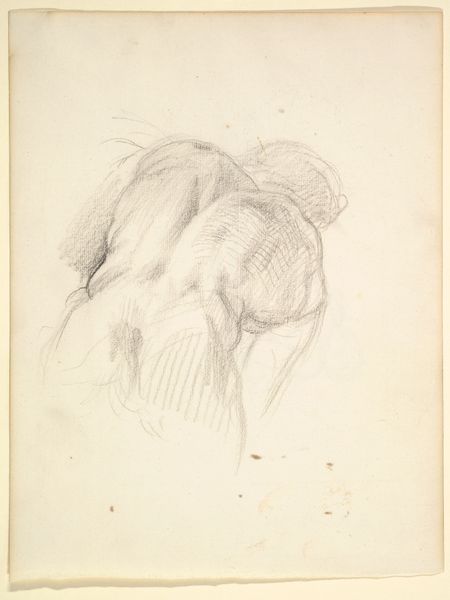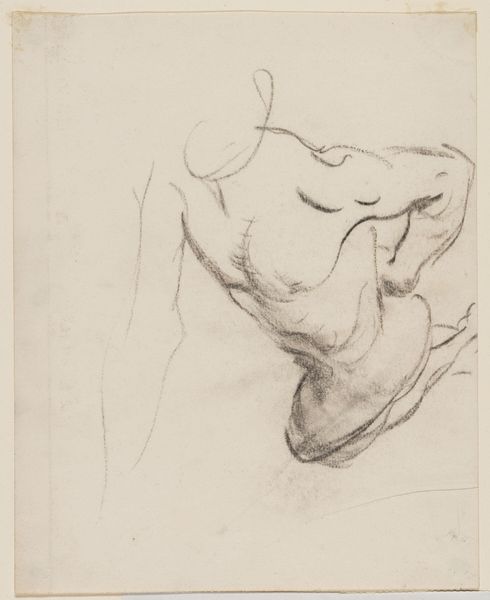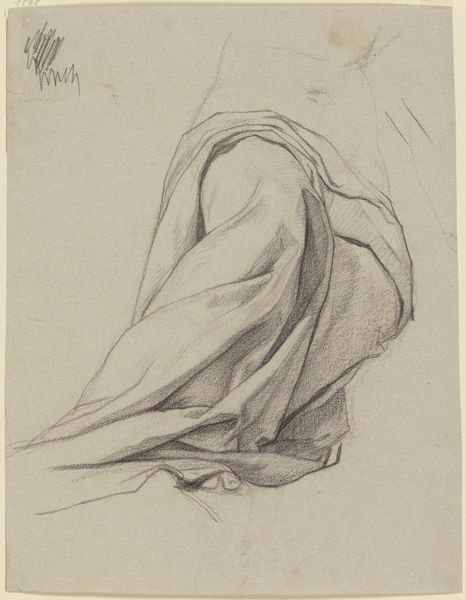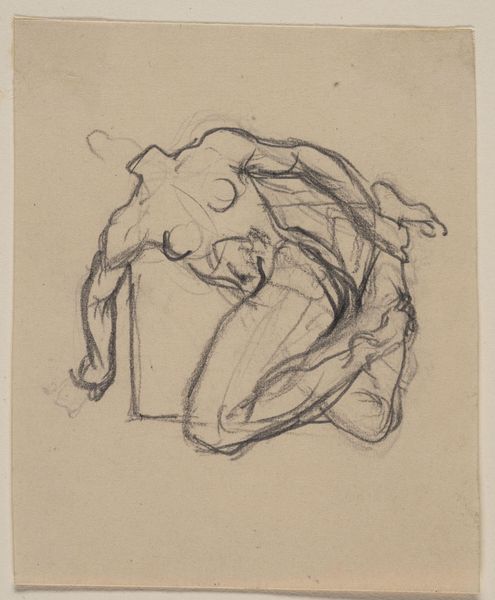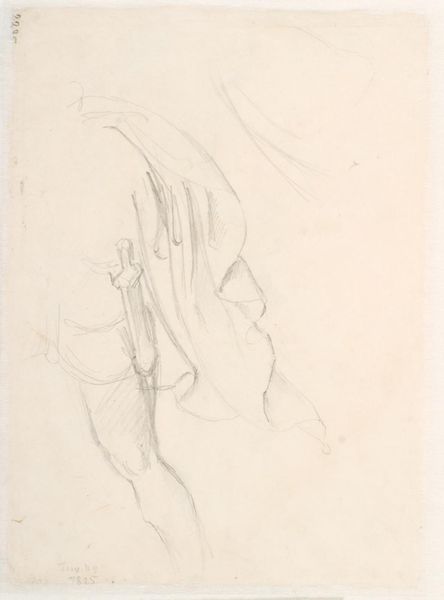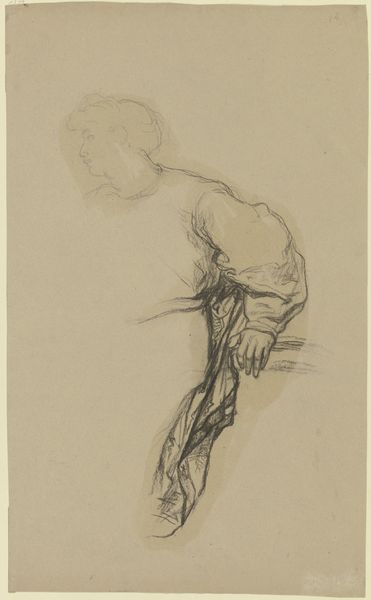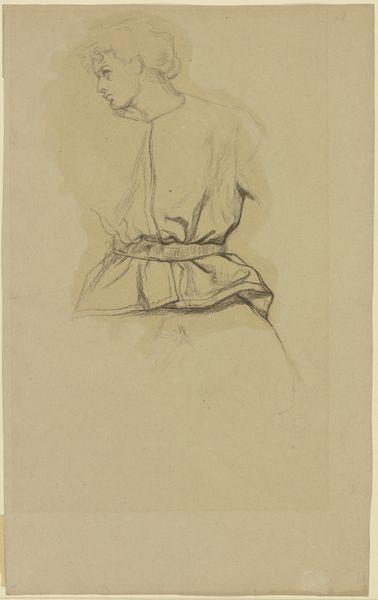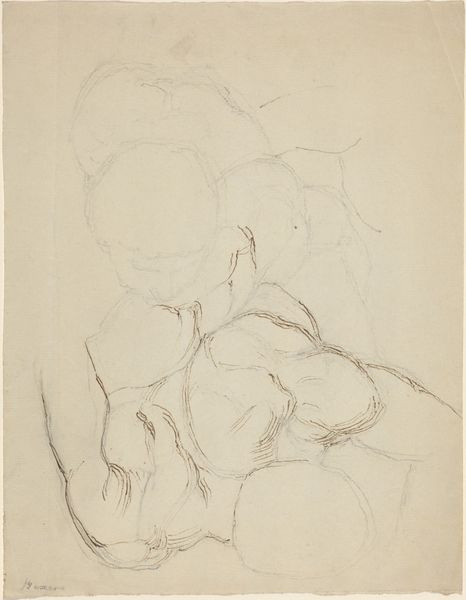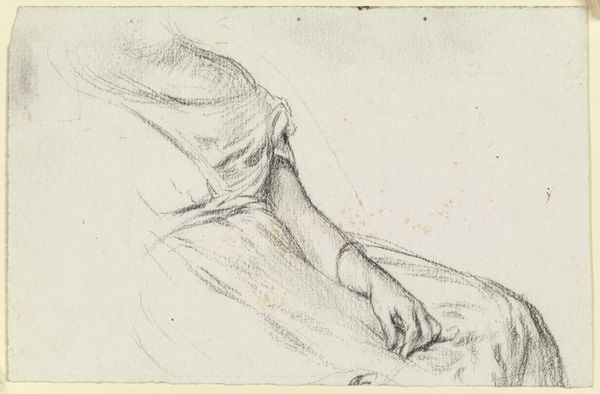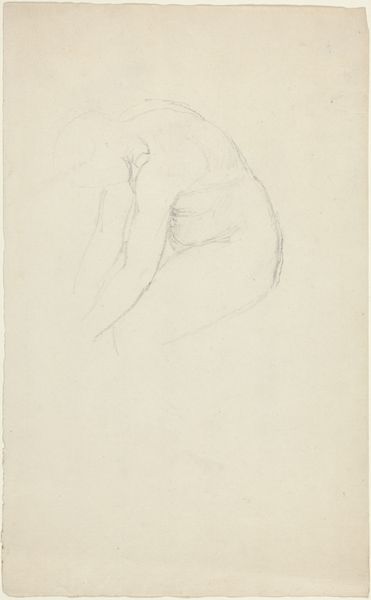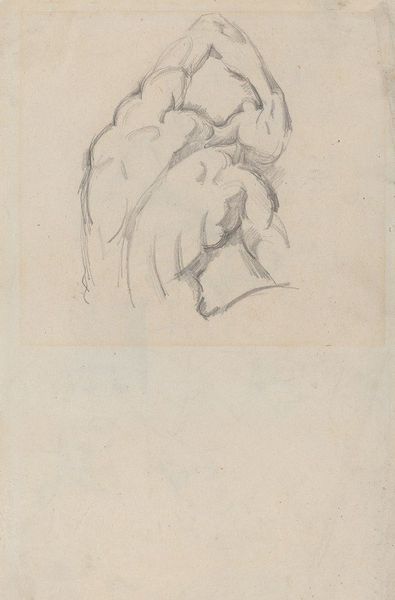
Den ene af dioskurerne fra Monte Cavallo, set fra ryggen 1804 - 1880
0:00
0:00
drawing, dry-media, pencil
#
portrait
#
pencil drawn
#
drawing
#
neoclacissism
#
pencil sketch
#
dry-media
#
pencil drawing
#
pencil
#
portrait drawing
#
pencil work
#
academic-art
#
realism
Dimensions: 275 mm (height) x 230 mm (width) (bladmaal)
Curator: Here we have Constantin Hansen's "One of the Dioscuri from Monte Cavallo, Seen from the Back," created sometime between 1804 and 1880. It's a pencil drawing currently held at the SMK, Statens Museum for Kunst. Editor: Striking! It’s this ghostly, almost ethereal rendering of the male form, but so incredibly muscular. There is an amazing attention to anatomical correctness while still feeling delicate, you know? The use of pencil adds to the sense of vulnerability, a hidden sensitivity of rendering the form of labor. Curator: Absolutely, and if we look at it materially, a pencil allows for very controlled and precise work. Think about the production of academic art at the time, a slow accumulation of layers of detail, moving from preparatory sketches, life drawings to the finished painting or sculpture. Consider too, the labor invested in training to develop these skills, both physical and intellectual. It highlights a system dependent on institutional hierarchies. Editor: Precisely! Hansen, positioning himself within the legacy of neoclassical art and academic drawing, participates in reinforcing a particular understanding of ideal masculinity, right? We see that reflected then and now, consciously or unconsciously, when we reflect on male identity and societal power. Curator: The choice of depicting the figure from the back is also interesting from a material perspective. The smooth curves of the back and shoulders become objects of aesthetic contemplation; you almost forget that there's a whole social, and potentially political, context this figure inhabits. Instead, labor and body become simply "art," aestheticized through the very medium of pencil drawing. Editor: Agreed. Think, too, about whose bodies are perpetually on display. Here, it’s a male nude, rendered with a delicacy which softens any potential critique about the figure. But if this was instead a drawing of a working-class figure, for example, a completely different discourse emerges regarding who is represented and why. Curator: It's all about choices of the means of representation, isn't it? Editor: Yes, it is. It's not just about the subject but also how they are made, what their purpose is, and to whom. Thinking about that helps me really see the nuances here. Curator: A closer examination into materials and their place within a greater social network—it really opens the picture. Editor: Indeed, it gives depth, both artistically and, well, ethically.
Comments
No comments
Be the first to comment and join the conversation on the ultimate creative platform.
